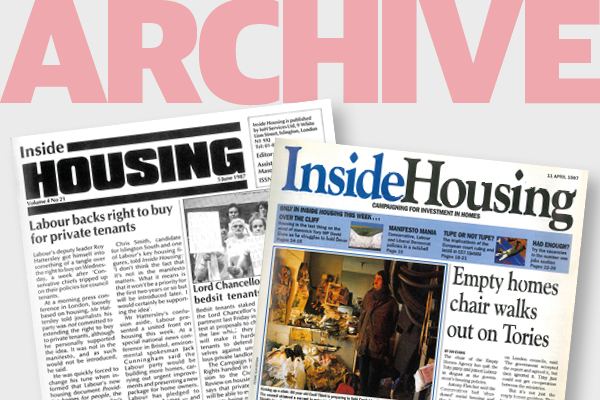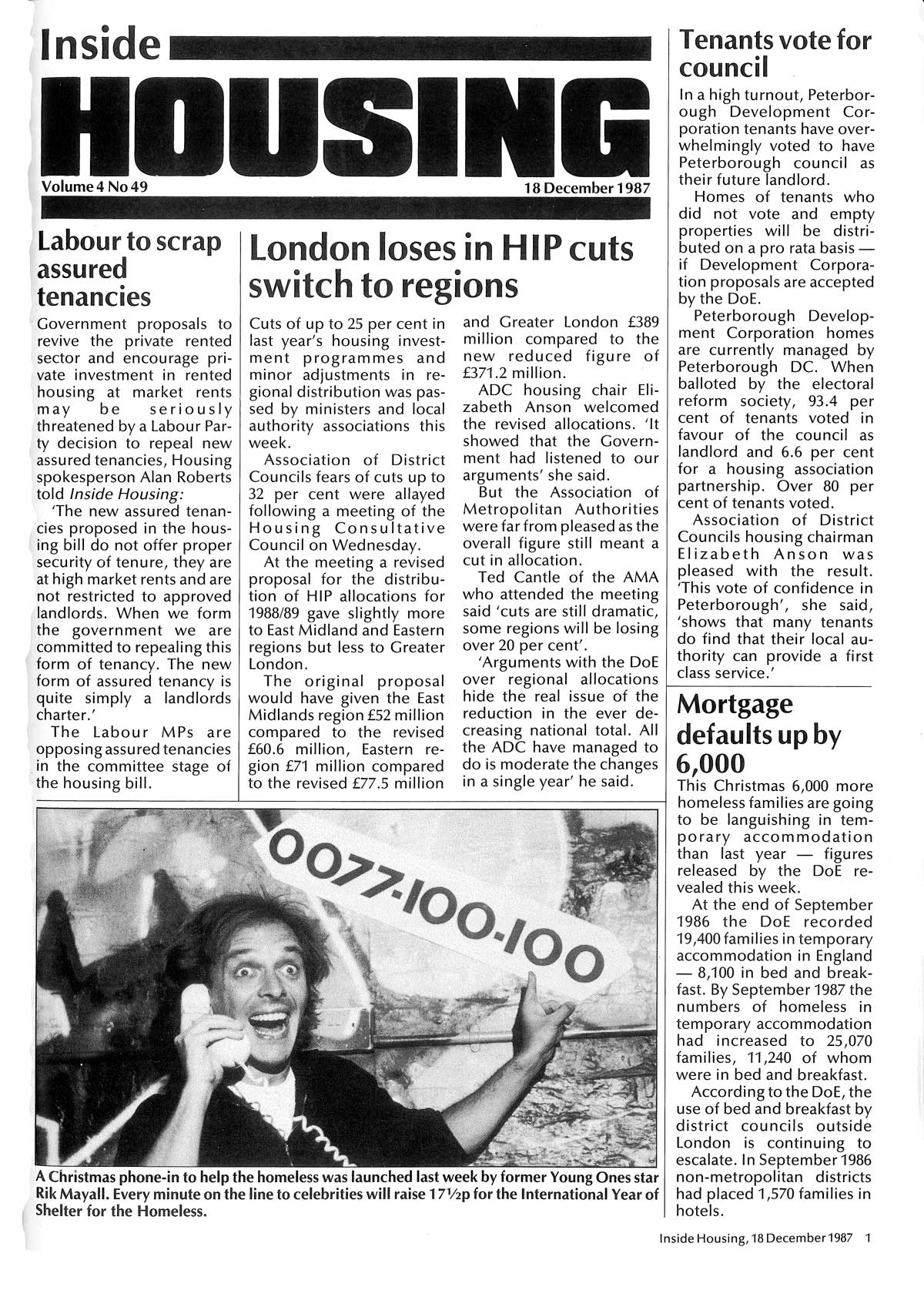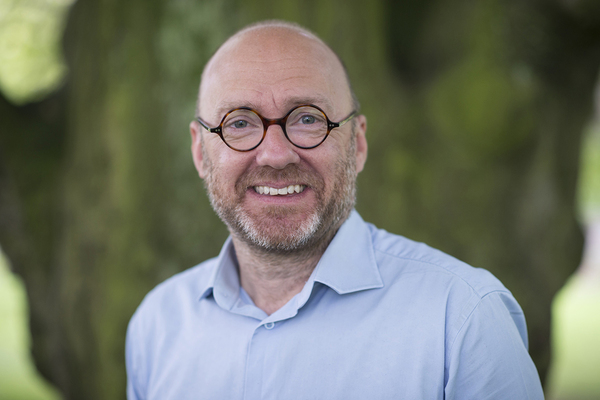You are viewing 1 of your 1 free articles
From the archive - rise in numbers of families in temporary accommodation
Inside Housing looks back at what was happening in the sector this week ten, 20 and 30 years ago
30 years ago
The number of homeless families in temporary accommodation over Christmas had risen by 6,000 in a year, Inside Housing reported on its front page.
By September 1987, the number of families stuck in temporary accommodation had reached 25,070, of which 11,240 were in bed and breakfasts. This compared to 19,400 families in September 1986, of which 8,100 were in B&Bs.
By contrast, the latest statistics – from September 2017 – show the number of households in temporary accommodation had risen to 78,180, the 24th time in a row that the government’s official statistics showed a rise in people in temporary accommodation compared to the previous quarter.
The number of families with dependent children in B&B-style accommodation was 2,710, up from a low of 740 in June 2010.
20 years ago
Tony Blair’s Social Exclusion Unit came under fire from the sector for failing to invest enough in social housing.
The front page story examined the New Labour government’s initiative, which was meant to tackle street homelessness, crime, drugs and unemployment on Britain’s “worst estates”. The new government had a list of 1,300 of these “worst estates” according to the consultant David Page.
The new unit was meant to get to work quickly – Mr Blair set a deadline of six months to “develop integrated and sustainable approaches” to problems on the estates and only four months to reduce the number of rough sleepers to “as near zero as possible”.
Geoff Mulgan, a member of the new unit, told Inside Housing there was “as tight a timetable as can be in terms of moving towards concrete proposals”.
Inside Housing’s editor of the time, Julian Dobson, had an extensive list of questions on how the unit would work in reality, and how social housing would factor in, however he welcomed the unit, saying: “At last there is a serious effort to tackle poverty on a broad front.”
Ten years ago
Inside Housing had secured an interview with Labour’s housing minister Yvette Cooper, which took the front page.
Ms Cooper had just set out her agenda for relaunching social housing estates as a platform for employment, with a package of reforms meant to reshape the sector as a response to a report by Professor John Hills, which had been published earlier that year and highlighted facts such as that more than half of English social housing tenants of working age were without paid work.
“Social housing also needs to support opportunity, and that’s where we need to do more. At its worst, social housing gives people a roof over their head but traps them in a home they don’t want to live in,” said Ms Cooper.









